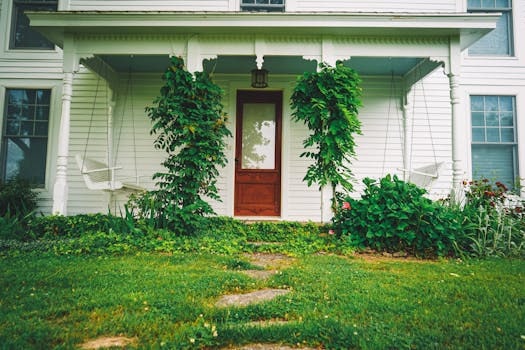The Return of the Front Porch: Social Architecture’s Comeback
In recent years, it seemed as though the front porch was a relic of the past, a forgotten artifact of a simpler time. Suburban neighborhoods saw the rise of backyards and decks, while urban areas embraced high-rise living. However, there has been a shift in recent years towards reviving the front porch as a central feature of social architecture. The return of the front porch marks a comeback for social architecture, as our communities are rediscovering the value of this once beloved space.
The Front Porch: A Brief History
The front porch has been a staple of American homes since the early 19th century. It was a place for conversation, relaxation, and socializing with neighbors. It was also a space where families could gather and engage with the community. However, with the rise of suburban living and modernization, the front porch slowly lost its appeal and fell out of fashion.
Why Did the Front Porch Disappear?
There are a few factors that contributed to the decline of the front porch. Firstly, the rise of air conditioning made it more comfortable to stay indoors during hot summer months. Additionally, as people started to prioritize privacy and seclusion, the front porch was seen as too open and exposed. Lastly, the increase of cars and the development of backyards as a private outdoor space shifted attention away from the front of the house.
The Revival of the Front Porch
In recent years, more and more homeowners are rediscovering the value of the front porch and bringing it back to life. With the rise of social media and technology, people are craving more in-person interactions and a sense of community. The front porch offers the perfect setting for this, with its inviting and welcoming nature.
Bringing Back Community Connections
One of the main reasons for the resurgence of the front porch is its ability to foster community connections. As people spend more time socializing online, they are yearning for face-to-face interactions. The front porch, with its open and communal layout, provides the perfect space for this. It allows for casual conversations with neighbors and fosters a stronger sense of community.
Promoting Health and Wellbeing
Another benefit of the front porch is its ability to promote health and wellbeing. Spending time outdoors has been proven to have numerous benefits for both physical and mental health. The front porch, with its close proximity to nature, offers a tranquil and calming space to relax and unwind. It also encourages physical activity, with many homeowners using it as a place for outdoor exercise or yoga.
Enhancing Curb Appeal
The front porch is not only functional but also adds to the aesthetic appeal of a home. It creates a welcoming and inviting first impression for visitors and passersby. Homeowners are now investing in reviving and renovating their front porches to enhance the curb appeal of their homes. This has also led to the resurgence of porch decor and furniture, with many homeowners incorporating vintage or modern pieces to make their front porch a unique and personalized space.
The Future of Social Architecture
As the front porch makes a comeback, it highlights a larger shift towards valuing social architecture. More and more architects and designers are prioritizing creating spaces that foster community and promote social interactions. From front porches to shared outdoor spaces and community hubs, social architecture is becoming a crucial part of our modern way of living.
In Conclusion
The return of the front porch marks a significant shift towards embracing social architecture in our communities. With its ability to promote connections, enhance wellbeing, and improve the aesthetics of a home, the front porch is more than just a traditional feature; it is a symbol of the resurgence of communal living. So, whether you are sitting on your front porch enjoying a cup of coffee or chatting with your neighbors, take a moment to appreciate the value of this once forgotten space in our homes and society.








